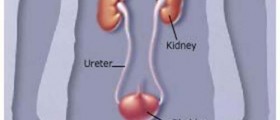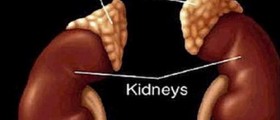
Failure of the adrenal glands to produce enough of certain hormones leads to an endocrine disorder known as Addison’s disease. Here we will deal with causes, symptoms and treatment options for Addison’s disease. Addison’s Disease Introduction
Addison’s disease is also known as adrenal insufficiency or hypocortisolism. This disorder may affect people of all age groups although it most commonly occurs in individuals between 30 and 35 years of age. Both sexes are equally affected by Addison’s disease.
Causes of Addison’s Disease
The adrenal glands are small organs located just above the kidneys. They are composed of the outer portion known as the cortex and the inner part called the medulla. Adrenaline and other adrenaline-like hormones are produced in the medulla, while the cortex produces hormones known as the corticosteroids that include glucocotricoids, mineralocorticoids and sex hormones.
Addison’s disease arises from insufficient production of the glucorticoids such as cortisol and mineralocorticoids such as aldosterone by the cortex. These hormones are vital for the whole body system. Low levels of these hormones occur due to damage to the cortex. This is most commonly caused by an autoimmune disease in which the immune system mistakenly attacks the adrenal glands.
Other possible causes of damage to the adrenal cortex include tuberculosis, cancer spreading from other parts of the body to the adrenal glands, bleeding into the adrenal glands, surgical removal of the glands and insufficiency of the secondary adrenal. Amyloidosis, the disease characterized by abnormal protein build up in various organs and infections such as HIV/AIDS or fungal infections can also trigger the disease.
Signs and Symptoms of Addison’s Disease
Addison’s disease is a progressive disease and its symptoms usually develop gradually. Common symptoms include muscle weakness, fatigue, loss of appetite, weight loss, low blood pressure, low blood glucose, sweating, headache, darkening of the skin, craving for salt, irritability and depression. Nausea, vomiting, diarrhea and irregular menstrual periods in women are common too.
Addison’s crisis is marked by sudden worsening of the symptoms. Addison’s crisis is accompanied with pain in the lower back, abdomen and legs, severe vomiting and diarrhea, drop in blood pressure and loss of consciousness.
Diagnosis of Addison’s Disease
Diagnosis of Addison’s disease involves different laboratory tests, along with a review of the patient’s medical history and symptoms. Diagnostic tests for Addison’s disease include the ACTH stimulation test, insulin-induced hypoglycemia test and blood test that measure levels of potassium, sodium, cortisol and ACTH. Imaging tests such as CT scan, X-rays and ultrasound are also used.
Treatment for Addison’s Disease
Treatment for Addison’s disease aims to replace corticosteroids. The treatment may be taken for life. Cortisol is usually replaced with Hydrocortisone taken orally while aldosterone can be replaced with fludrocortisone acetate. Adrenal crisis is a life-threatening condition that requires intravenous injections of glucocorticoids given immediately.
















Your thoughts on this
Loading...